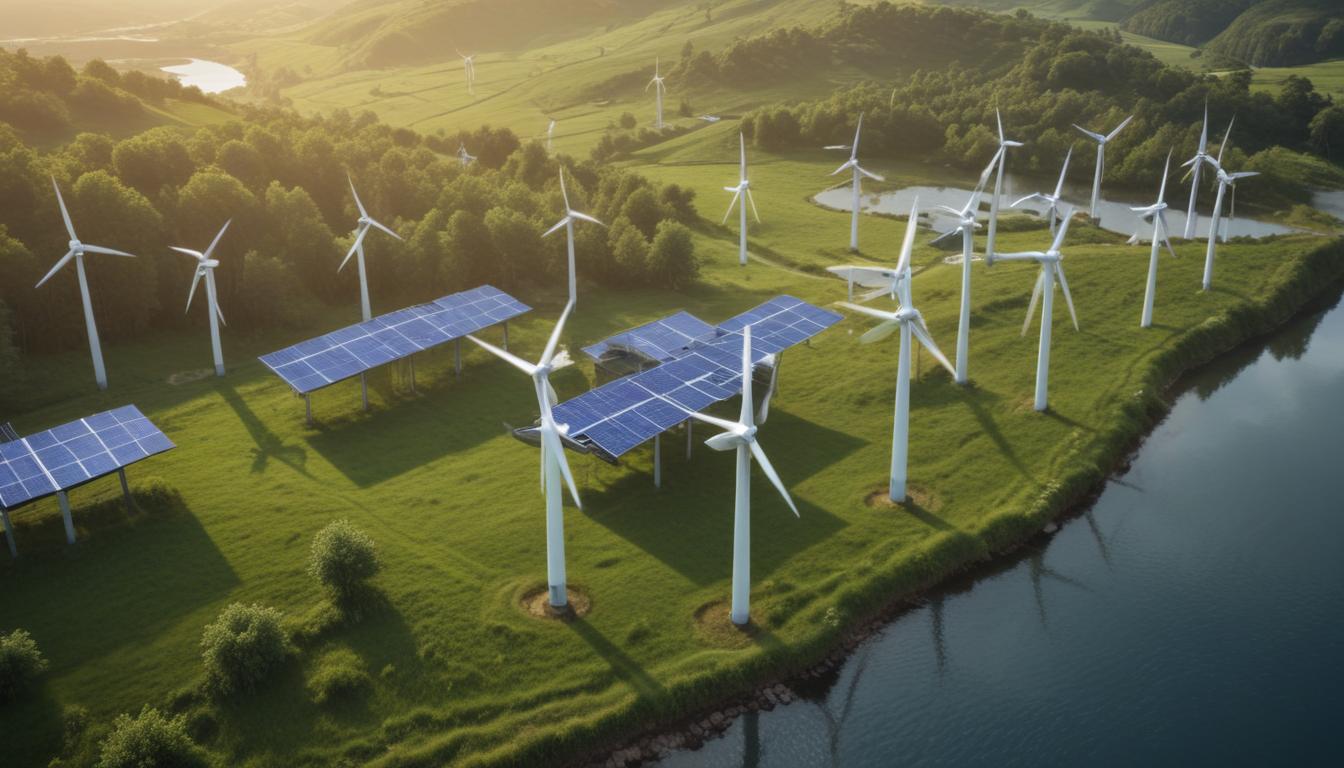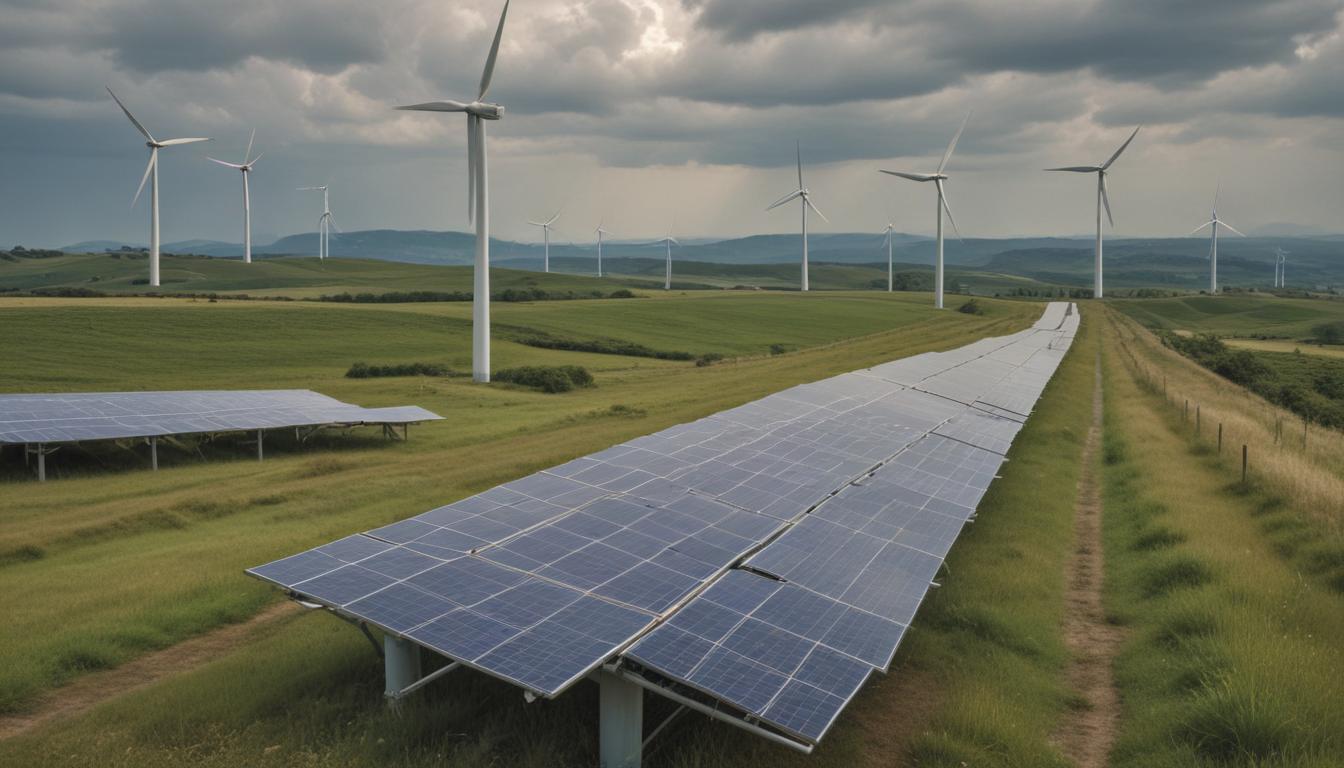Now Reading: Renewable Energy Powering Our Future
- 01
Renewable Energy Powering Our Future
Renewable Energy Powering Our Future

Renewable Energy Technologies Powering Our Future
Are you concerned about the constant news of climate change, fluctuating energy prices, and our planet’s health? It can feel overwhelming to think about the world we are leaving for future generations, especially when our daily lives are so dependent on energy. The reliance on finite, polluting fossil fuels seems like an unbreakable cycle, leaving many feeling powerless. But what if the solution wasn’t about sacrifice, but about innovation? The answer is already here, humming quietly on rooftops, spinning gracefully on hillsides, and steaming up from deep within the Earth.
This guide is your entry point into the world of renewable energy. These technologies are not distant, futuristic concepts; they are practical, powerful, and rapidly becoming the backbone of a new energy economy. By harnessing the natural, inexhaustible forces of the sun, wind, and Earth, we can create a cleaner, more stable, and prosperous future. Forget the feeling of helplessness; it’s time to feel empowered by understanding the incredible technologies that are already shaping a better tomorrow.
The Unstoppable Rise of Solar Power
When most people think of renewable energy, the first image that comes to mind is often a sleek, dark solar panel. Solar power technology is a true marvel of modern science, converting sunlight directly into electricity through a process known as the photovoltaic effect. At the heart of this are photovoltaic (PV) cells, typically made from silicon. When sunlight strikes these cells, it energizes electrons, knocking them loose from their atoms. This creates a flow of electrical current that can be captured, converted, and used to power everything from a single home to an entire city.
The versatility of solar energy is one of its greatest strengths. It can be deployed on a small scale, with rooftop panels giving individual homeowners energy independence and lower electricity bills. It can also be implemented on a massive scale, with vast solar farms sprawling across deserts and open land, generating enough power to rival traditional power plants. Thanks to decades of research and development, the cost of solar panels has plummeted while their efficiency has soared, making solar one of the most affordable and accessible forms of new energy generation on the planet.

Harnessing the Power of the Wind
There is something majestic about the sight of a modern wind turbine, its enormous blades slicing silently through the air. These structures are far more than simple windmills; they are sophisticated power generators that convert the wind’s kinetic energy into clean electricity. As wind flows over the aerodynamically designed blades, it creates lift, causing the rotor to spin. This spinning motion turns a central shaft connected to a generator, which produces electricity that is then fed into the grid.
Wind energy is a powerhouse in the renewable sector, with both onshore and offshore installations contributing significantly to global energy supplies. Onshore wind farms, often placed on rolling hills or agricultural land, are a common sight, while offshore farms are gaining incredible momentum. By placing turbines in the ocean, we can take advantage of stronger, more consistent winds, allowing for the generation of tremendous amounts of power. While wind is an intermittent resource—it doesn’t blow all the time—advancements in grid technology and large-scale battery storage are making it an increasingly reliable and indispensable part of our energy mix.
Tapping into the Earths Heat Geothermal Energy
While solar and wind power depend on what happens above the ground, geothermal energy looks deep within the Earth for its power. This remarkable technology taps into the immense, natural heat stored in our planet’s core. In areas with high geothermal activity, underground reservoirs of hot water and steam exist relatively close to the surface. Power plants can drill into these reservoirs and channel the hot steam to the surface, where it is used to spin turbines and generate electricity, much like in a traditional power plant but without burning any fossil fuels.
One of the most significant advantages of geothermal energy is its consistency. Unlike solar or wind, the Earth’s heat is available 24 hours a day, 7 days a week, providing a stable and reliable baseload power source that can anchor an entire electrical grid. Its physical footprint on the surface is also surprisingly small compared to other large-scale power plants. Beyond generating electricity, geothermal heat can also be used directly to heat and cool buildings through geothermal heat pumps, making it a versatile solution for reducing our carbon footprint in multiple sectors.
Building a Sustainable Tomorrow
The transition to a sustainable future will not be powered by a single solution, but by a diverse portfolio of these incredible renewable technologies working in harmony. Solar panels will soak up the daytime sun, wind turbines will capture the power of passing weather fronts, and geothermal plants will provide a steady, unwavering foundation of clean energy. Combined with advancements in hydropower, biomass, and energy storage, we are rapidly building a more resilient, decentralized, and environmentally friendly energy system.
This shift represents more than just a change in how we generate electricity; it is a fundamental rethinking of our relationship with the planet. It is a move away from a model of extraction and depletion toward one of balance and regeneration. By embracing these technologies, we are not only combating climate change and air pollution but also creating new economic opportunities, enhancing energy security, and building a brighter, healthier world for all. The future of energy is clean, it is abundant, and it is here.


































